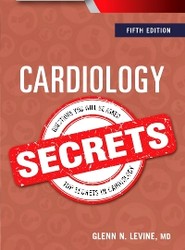(To see other currencies, click on price)
MORE ABOUT THIS BOOK
Main description:
Part of the popular Secrets series, this helpful reference presents basic physical therapy concepts and then introduces different healing modalities, specialties and orthopedic procedures typically prescribed for common injuries such as shoulders and extremities. Common diseases are included as well as more innovative diagnostic tools for physical therapists such as radiology. Each chapter features concise information that includes the author's tips, memory aids and "secrets." Bulleted lists, algorithms and illustrations provide a quick review of the specific topic discussed. The information is entirely evidence-based, outcome based and up-to-date.
All chapters provide an emphasis on outcome studies and evidence-based practice and include the latest research for the concepts presented.
Numerous charts, table and algorithms summarize and visually portray concepts covered in the chapters to provide additional information for clinical decision making.
Chapters are written by well-known contributors, including some of the best-known physical therapists practicing in the field today.
Provides important information on topics covered in the orthopedic specialty exam.
Includes detailed information relevant to making an accurate shoulder assessment as well as the most common shoulder disorders.
A comprehensive, heavily illustrated new chapter on orthopedic radiology provides a quick review on reading and interpreting radiographs of common orthopedic conditions.
A new differential diagnosis chapter describes the process and the purpose of differential diagnosis for physical therapists who are practicing without referral and who need to expand their knowledge of medical problems that mimic musculoskeletal disease.
Contents:
I. BASIC SCIENCE
1. Muscle Structure and Function
2. Biomechanics
3. Soft Tissue Injury and Repair
4. Bone Injury and Repair
5. Exercise Physiology
II. DISEASE PROCESSES
6. Arthritis
7. Deep Venous Thrombosis
8. Complex Regional Pain Syndromes
III. ELECTROTHERAPY AND MODALITIES
9. Cryotherapy and Moist Heat
10. Electrotherapy
11. Iontophoresis, Ultrasound,Phonophoresis, and Laser Therapy
IV. SPECIAL TOPICS
12. Stretching
13. Manual Therapy
14. Massage and Soft Tissue Mobilization
15. Spinal Traction
16. Normal and Pathologic Gait
17. Pharmacology in Orthopaedic Physical Therapy
18. Evaluation of Medical Laboratory Tests
19. Clinical Electromyography and Nerve Conduction
20. Orthopaedic Neurology
21. Clinical Research and Data Analysis
22. Evidence-Based Practice
23. Sports Medicine
24. Differential Diagnosis and Medical Screening
25. Pediatric Orthopaedic Physical Therapy
26. Women's Health Issues
27. Wound Healing and Management
28. Management of Chronic Pain
29. Headache
30. Functional Capacity Testing and Industrial Injury Treatment
31. Anatomy Mnemonics
32. Nutrition
33. Spinal Exercise Programs
34. Isokinetic Testing and Exercise
35. Exercise in Aging and Disease
36. Orthopaedic Radiology
V. THE SHOULDER
37. Functional Anatomy of the Shoulder
38. Shoulder Impingement and Rotator Cuff Tears
39. Shoulder Instability
40. Adhesive Capsulitis
41. Total Shoulder Arthroplasty
42. Acromioclavicular and Sternoclavicular Injuries
43. Scapulothoracic Pathology
44. Fractures of the Proximal Humerus and Humeral Shaft
45. Nerve Entrapments of the Shoulder Region
VI. THE ELBOW AND FOREARM
46. Functional Anatomy of the Elbow
47. Common Orthopaedic Elbow Dysfunction
48. Elbow Fractures and Dislocations: Patterns, Classifications, and Management
49. Nerve Entrapments of the Elbow and Forearm
VII. THE WRIST AND HAND
50. Functional Anatomy of the Wrist and Hand
51. Common Orthopaedic Dysfunction of the Wrist and Hand
52. Fractures and Dislocations of the Wrist and Hand
53. Nerve Entrapments of the Wrist and Hand
VIII. THE SPINE
54. Functional Anatomy of the Spine
55. Mechanical and Diskogenic Back Pain
56. Lumbar Spinal Stenosis
57. Spondylolysis and Spondylolisthesis
58. Scoliosis
59. Thoracic Spine and Rib Cage Dysfunction
60. Spinal Fractures and Dislocations: Patterns, Classifications, and Management
61. Temporomandibular Joint
IX. THE SACROILIAC JOINT
62. Functional Anatomy of the Sacroiliac Joint
63. Sacroiliac Dysfunction
X. THE HIP AND PELVIS
64. Functional Anatomy of the Hip and Pelvis
65. Common Orthopaedic Hip Dysfunction
66. Fractures and Dislocation of the Hip and Pelvis
67. Total Hip Arthroplasty
XI. THE KNEE
68. Functional Anatomy of the Knee
69. Patellofemoral Disorders
70. Meniscal Injuries
71. Ligamentous Injuries of the Knee
72. Total Knee Arthroplasty
73. Knee Fractures and Dislocations
74. Nerve Entrapments of the Lower Extremity
XII. THE FOOT AND ANKLE
75. Functional Anatomy of the Foot and Ankle
76. Common Orthopaedic Foot and Ankle Dysfunctions
77. Fractures and Dislocations of the Foot and Ankle
78. Foot Orthoses and Shoe Design
Index
PRODUCT DETAILS
Publisher: Elsevier (Hanley & Belfus Inc.)
Publication date: July, 2006
Pages: 704
Weight: 816g
Availability: Available
Subcategories: Orthopaedics and Fractures, Physiotherapy
From the same series

























































